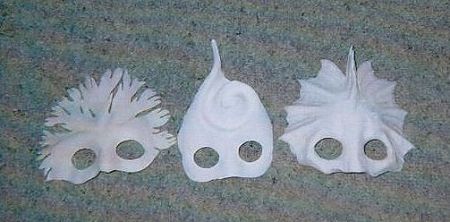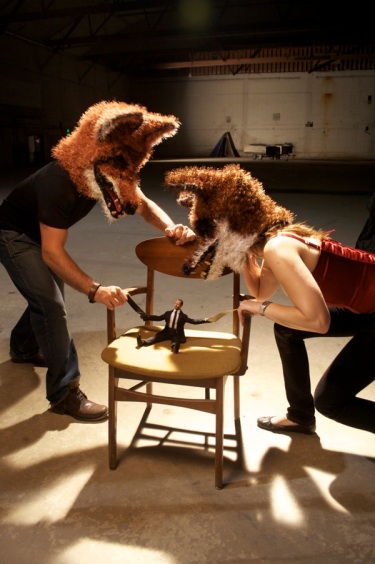Dave Riley is a mask-maker, puppeteer and playwright based in Brisbane. His Mask Studio tutorials have been of great help to me a number of times – thanks Dave! There are two mask tutorials:
The felt method is really interesting. It involves soaking the felt in white glue and then moulding it to shape rather like working leather. There are then different finishes to experiment with, including paint, and leather gloss and polish. The result is a very light strong mask.
A few years ago when I first tried it and made a series of animal masks, I built on a paper mache base because I wasn’t sure it would be strong enough otherwise, but recently in making some smaller masks for Hidden Corners’ ‘See Beneath’, I was more confident in using the felt by itself, with a muslin/white glue backing to make the inside comfortable and strong.

The seaweed fronds had a little extra strengthening, just because the shape was not intrinsically strong like the shell. The fishy mask was done a little differently, without felt because I wanted finer detail. It is carved quite thinly out of styrofoam, and has several layers of muslin and white glue to give it strength.

These have a water-based polymer gloss varnish added to the paint, which kind of plasticizes them.






